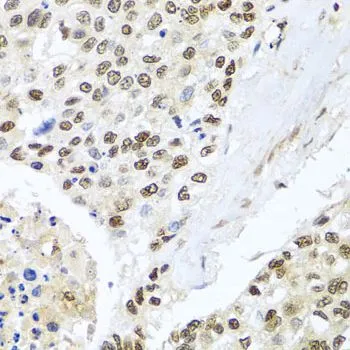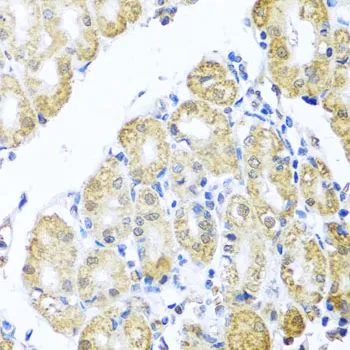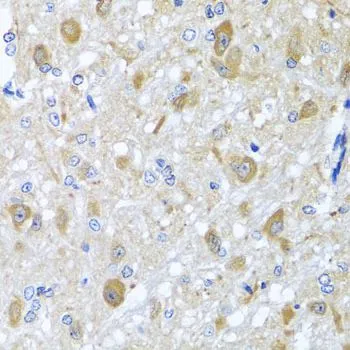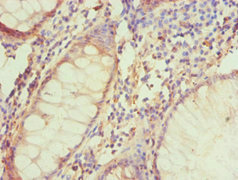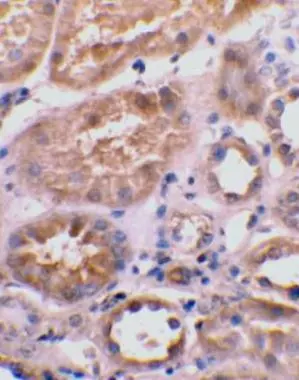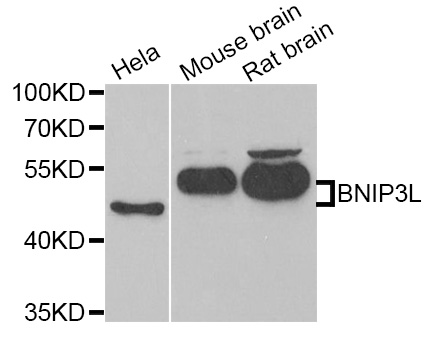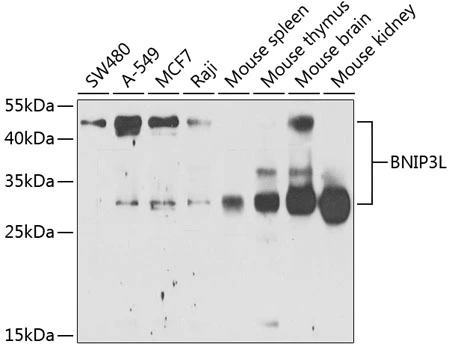
WB analysis of various sample lysates using GTX64447 BNIP3L antibody. The signal was developed with ECL plus-Enhanced. Dilution : 1:1000 Loading : 25microg per lane
BNIP3L antibody
GTX64447
ApplicationsWestern Blot, ImmunoHistoChemistry, ImmunoHistoChemistry Paraffin
Product group Antibodies
TargetBNIP3L
Overview
- SupplierGeneTex
- Product NameBNIP3L antibody
- Delivery Days Customer9
- Application Supplier NoteWB: 1:500 - 1:2000. IHC-P: 1:50 - 1:200. *Optimal dilutions/concentrations should be determined by the researcher.Not tested in other applications.
- ApplicationsWestern Blot, ImmunoHistoChemistry, ImmunoHistoChemistry Paraffin
- CertificationResearch Use Only
- ClonalityPolyclonal
- ConjugateUnconjugated
- Gene ID665
- Target nameBNIP3L
- Target descriptionBCL2 interacting protein 3 like
- Target synonymsBNIP3a, NIP3L, NIX, BCL2/adenovirus E1B 19 kDa protein-interacting protein 3-like, BCL2/adenovirus E1B 19 kDa protein-interacting protein 3A, BCL2/adenovirus E1B 19-kd protein-interacting protein 3a, BCL2/adenovirus E1B 19kDa interacting protein 3 like, NIP-3-like protein X, NIP3-like protein X, adenovirus E1B19k-binding protein B5
- HostRabbit
- IsotypeIgG
- Protein IDO60238
- Protein NameBCL2/adenovirus E1B 19 kDa protein-interacting protein 3-like
- Scientific DescriptionThis gene encodes a protein that belongs to the pro-apoptotic subfamily within the Bcl-2 family of proteins. The encoded protein binds to Bcl-2 and possesses the BH3 domain. The protein directly targets mitochondria and causes apoptotic changes, including loss of membrane potential and the release of cytochrome c. [provided by RefSeq, Feb 2015]
- Storage Instruction-20°C or -80°C,2°C to 8°C
- UNSPSC12352203

